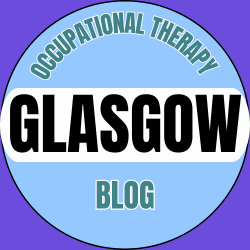
Professional identity development in occupational therapy
What is professional identity?
When we say professional identity, it is more than just your job title or the credentials that follow your name. Professional identity is “a constellation of attributes, beliefs, values, motives, and experiences through which people define themselves in a professional role” (Fitzgerald, 2020). As an occupational therapist, it is how you see yourself as an occupational therapist and how this perception evolves through your experiences, challenges, and triumphs.
Why professional identity matters
Our professional identity is the backbone of our practice. It guides our interactions with service users, shapes our therapeutic approach, and influences how we collaborate with other healthcare professionals. In the complex landscapes of healthcare, our professional identity is the beacon that lights our way, ensuring we remain true to the core values of the occupational therapy profession.
Developing professional identity as occupational therapist
Developing a robust professional identity doesn’t happen overnight. It is a continuous, dynamic process of discovery, reflection, and growth that evolves throughout a professional’s career (Haghighat et al, 2019). The journey towards forming a professional identity is a personal milestone which can start at different moments for different individuals, depending on their experiences and motivations. For some, it begins the moment they decide to pursue a career in the profession and continues as they encounter new experiences, challenges, and opportunities for growth. For others, it might start more gradually, as they explore and solidify their interest in the field through education, personal encounters, or exposure to the profession.
As occupational therapists, development of our professional identity is not static but a continuous journey shaped and reshaped by professional engagements, learning opportunities, reflections, and the changing contexts within which we operate. As we gain experience, our professional identity may deepen, broaden, or even shift direction in response to new insights, roles, or priorities. Even upon retirement, the influence of our professional identity may persist, as the knowledge, values, and perspectives developed over our career continue to inform our worldview and contributions outside of formal professional contexts.
Our journey of Professional identity development is akin to kayaking down a river.
Understanding the complexities of professional identity development: The Kayaking metaphor
Kayaking is an adventure sport which involves navigating waters in a small, slender craft using a double-bladed paddle. It demands a blend of strength, agility, and technique, allowing the kayaker to manoeuvre through various water conditions – from calm to turbulent rivers.
Kayaking is not just about physical prowess; it’s equally about understanding the water, adapting to its ever-changing nature, and making split-second decisions that align with one’s skills and the environment.

We can draw from this metaphor of kayaking down a river to understand the complexities of professional identity development. We will consider three essential components of this metaphor: The river, the varied water conditions, and the activities associated with kayaking.
- The River
In the kayaking metaphor, the river represents the professional landscape of occupational therapy embodying the journey of professional identity development. The diverse conditions, from calm stretches to turbulent rapids, symbolise the varied experiences, opportunities for growth, and obstacles that occupational therapists navigate throughout their careers, shaping their skills, values, and practices.
2. Navigating Varied Water Conditions:


Just as kayakers face different water conditions, occupational therapists encounter diverse experiences and challenges throughout their professional journey.
a. Calm waters: These symbolize periods of stability and predictability in one’s career. Such times allow for reflection, consolidation of skills, and deepening of professional relationships. It’s a phase where routine practices can be perfected, and therapists can enjoy the impacts of their work on client outcomes without the pressure of immediate challenges.
b. Rapids and turbulent waters: These represent the unpredictable, challenging aspects of the profession. This includes complex client cases, ethical dilemmas, navigating changes within healthcare systems, or adapting to new policies and practices. These conditions require therapists to quickly adapt, apply critical thinking, and often innovate in their approaches to care. They test resilience, problem-solving skills, and the ability to remain composed under pressure.
c. Obstacles in the water (e.g., rocks, logs): These symbolise specific hurdles in professional identity development such as personal biases, professional burnout, or systemic barriers to effective care. Overcoming these obstacles requires self-awareness, persistence, and sometimes, seeking support from peers or mentors.
d. Confluences: Where rivers meet, represent opportunities for interdisciplinary collaboration and learning. These are points where occupational therapists can integrate knowledge from other fields, work in teams, and develop a more holistic approach to client care.
e. The changing seasons: Reflect the evolving nature of the occupational therapy field itself, including advances in research, changes in practice standards, and shifts in societal needs. Professionals must continuously update their knowledge and adapt their practices to remain effective and relevant.
Navigating these varied water conditions mirrors the continuous process of professional growth and identity development, emphasizing the need for adaptability, lifelong learning, and resilience in the face of change.
3. Activities Associated with Kayaking
The various activities associated with kayaking – such as paddling, steering, capsizing and recovering, navigating through rapids, and making strategic stops – serve as rich metaphors for the different facets of professional identity development in occupational therapy. Each activity symbolizes essential skills, strategies, and experiences that contribute to the growth and evolution of an occupational therapist’s professional identity.
a. Paddling: This activity represents the continuous effort and active engagement required in professional growth. Paddling forward signifies the day-to-day work, consistent learning, and application of knowledge that drive progress in one’s career. It’s about moving forward, even when the waters are calm, ensuring steady advancement towards one’s goals.
b. Steering: This symbolises the decision-making and direction-setting aspects of professional life. Just as a kayaker must navigate through the water, making constant adjustments, occupational therapists must make choices about their career paths, specialisations, and approaches to care, steering their professional journey in alignment with their values and goals.
c. Capsizing and Recovering: This reflects the setbacks and challenges that professionals may encounter, along with their resilience and ability to recover. Learning from failures, adapting to unexpected situations, and developing resilience are crucial aspects of building a robust professional identity. This activity highlights the importance of perseverance and learning from experiences.
d. Navigating through Rapids: This represents managing complex and challenging situations in practice. It requires quick thinking, adaptability, and the application of advanced skills. This activity highlights the dynamic and sometimes unpredictable nature of working in healthcare, emphasising the need for occupational therapists to be flexible and resourceful.
e. Making Strategic Stops: This symbolises reflection and self-care. Just as kayakers must occasionally stop to rest, assess their surroundings, or plan their next moves, occupational therapists need to pause in their professional journey to reflect on their experiences, re-assess their goals, and attend to their well-being. These stops are crucial for sustained growth and preventing burnout.
f. Portaging: This involves carrying the kayak overland to bypass obstacles or dangerous sections of the river. This represents the need to sometimes take alternative paths in one’s career, whether due to personal reasons, professional challenges, or changes in the field. It highlights the importance of flexibility and the willingness to explore new opportunities.
g. Scouting Rapids Beforehand: The activity of assessing rapids before navigating them symbolises the importance of preparation and foresight in professional practice. It involves researching, attending conferences, workshops, seminars, planning, and preparing for future challenges, ensuring that occupational therapists are well-equipped to handle complex cases and professional transitions effectively.
Each of these activities associated with kayaking offers valuable lessons and insights into the ongoing process of professional identity development in occupational therapy. They embody the importance of active engagement, adaptability, resilience, strategic planning, and reflection in navigating the complexities of professional life.
Attributes essential for this journey
Continuous Learning and Adaptation: The essence of kayaking lies in the kayaker’s ability to read the water and adapt their techniques accordingly. Similarly, in occupational therapy, professionals must continually update their knowledge, refine their skills, and adapt their approaches to meet their clients’ evolving needs. This commitment to lifelong learning is a cornerstone of professional identity development, enabling us to provide the highest standard of care.
The Role of Reflection: In the stillness of calm waters, kayakers find moments for reflection, contemplating their journey, appreciating the beauty of their surroundings, and planning their next moves. This reflective practice is mirrored in occupational therapy, where professionals routinely assess their interactions, outcomes, and personal growth. Reflection is vital for integrating experiences into our professional identity, shaping our values, beliefs, and practices.
Community and Collaboration: While kayaking can be a solitary activity, navigating challenging waters often requires the support of a community – fellow kayakers who provide guidance, share experiences, and offer assistance. This sense of community is paralleled in occupational therapy, where collaboration with colleagues, clients, and the wider healthcare team enriches our professional practice and identity (Simmonds et al, 2020). Together, we navigate the complexities of healthcare, advocate for our profession, and contribute to the well-being of our clients.
Final thoughts
In the dynamic river of occupational therapy, our professional identity development is a journey of continuous learning, reflection, and growth. Like kayaking, it demands resilience, adaptability, and a deep understanding of our environment and ourselves. This journey, with its calm stretches and challenging rapids, shapes us into skilled, compassionate professionals capable of navigating the diverse landscapes of healthcare and making a profound impact on the lives we touch.
At this point, I will urge you to take some time now to reflect on the following in relation to your own professional identity development:
1. How have your experiences – both challenges and successes – shaped your approach to occupational therapy, and what do they reveal about your core values and beliefs as a professional?
2. In what ways have you adapted your professional practices in response to the evolving needs of your clients, changes within the healthcare system, and advances in occupational therapy research?
3. What steps are you taking to ensure continuous professional development, and how do these efforts contribute to the kind of therapist you aspire to be?
References:
Fitzgerald, A. (2020). Professional identity: A concept analysis. In Nursing forum (Vol. 55, No. 3, pp. 447-472).
Haghighat, S., Borhani, F., Ranjbar, H., & Naseri, P. (2019). Evaluating the formation of professional identity in Iranian nursing students after implementation of a new curriculum. Journal of Nursing and Midwifery Sciences, 6(3), 138-143.
Simmonds, A., Nunn, A., Gray, M., Hardie, C., Mayo, S., Peter, E., & Richards, J. (2020). Pedagogical practices that influence professional identity formation in baccalaureate nursing education: A scoping review. Nurse Education Today, 93, 104516.

Written by
Eric Nkansah Opoku
Occupational Therapy Lecturer
Masters Year 2 Coordinator
Glasgow Caledonian University

